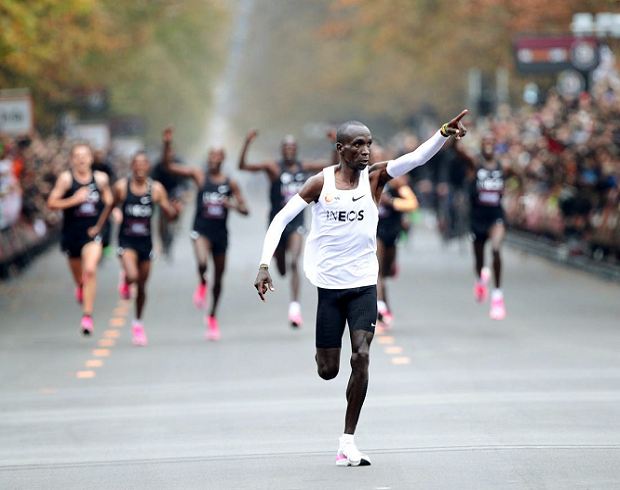The morning of Saturday 12th October 2019 will forever be etched in many Kenyan minds. Eliud Kipchoge made history by coming in a sub-two hour marathon clocking 1:59:40. The ultimate part was watching him come down the last 100 metres, his legs powerfully striding towards the finish line and his face a blend of studied concentration, then total relaxation and utter joy when he realized he would come in with milliseconds to spare. I’ve rewound that clip countless times, Eliud’s power salute to the crowd on his right, thrusting out his index finger in salutation to an unseen supporter, followed by his victory signage: two fingers beneath his eyes telling the crowd “Watch this…I got this”.
Around about the umpteenth time of watching and rewinding, I realized something I hadn’t noticed before. In the last 500 metres, his pacemakers fell behind to let him run to his glorious victory and fame and then ran behind while yelling, clapping and generally providing a euphoric rearguard as he came pounding down the pike. Their unabashed joy and selfless pride as he crossed the finish line was as emotional as it was inspiring. This was not about them, it was about him. It was about the role that they played to get him to deliver on the challenge. His victory was 100% their victory too.
I then played back excerpts of the race again. I watched all 1:59:40 of it. I had particularly enjoyed how seamlessly the transitions that the rotating team of seven pacemakers had undertaken in their Y formation. There was not a single trip up. No one was huffing and puffing while getting in step for the grueling 2 minute 50 second average pace per kilometer. No one elbowed the other to get into their laser beam designated space. It was like watching a ballet performance. Precise positioning designed to be delivered in a seamless choreography. I’m not a huge fan of sports, but I occasionally enjoy watching team sports like football, that are designed to ensure that wins arise from multiple player efforts rather than lone star performances. Running is a solo sport so watching 41 individuals rally around a lone star of a solo sport just to help him make a solo achievement was amazing.
I then reflected on what part I’ve played in my past life as a corporate employee to help make my boss look good. Having had fantastic bosses for the most part and, thankfully, a few intellectually plus emotional intelligence challenged bosses, it ended up being a long reflection. The great bosses I have had would no doubt have the rest of the team cheering behind as the individual continued to soar in the organization, largely due to our own individual performances that, collectively counted, helped them deliver and exceed expectations.
The one-on-one sessions with these bosses where there was motivation, encouragement and a lot of mentoring really helped me grow. In my first banking job, I needed a lot of that because I was completely clueless about how banking worked, how to credit assess borrowers, how to make sales pitches to corporate clients or how to structure complex trade facilities that were in multiple currencies. Both my boss at the time, and her boss at the time, took time to sit me down, explain the processes while accompanying me to critical clients to help provide the senior leadership presence required for client decisions to be made. As a result, I excelled at my work and this in turn helped my bosses achieve their team targets as they provided the same support to other team members. If these bosses chose to run a corporate banking marathon, I’d sign up 200% to be on their pacemaker team!
My bad bosses. Well. Thankfully they were very few. Interesting enough, this reflection made me realize that they had one management strategy in common: divide and rule. In getting their team members to constantly bicker and perpetuate a silo mentality, they seemed to relish the backstabbing and the constant currying of favors by some team members. They gave their time sparingly, dishing it out as if it were the last drops of water to a lost group of stragglers in the middle of the Sahara desert. If the team members were in Kipchoge’s team, they’d be randomly arranged in shapeless formation and trip each other up deliberately while elbowing aside the main man. The marathon would be completed eventually, but the race would not be won. To Eliud Kipchoge and his band of pace making warriors: Congratulations! Even though Eliud was the main event, his pace makers profile were elevated at a global level as part of Team Victory. Well done.
Twitter: @carolmusyoka

 carolmusyoka consultancy
carolmusyoka consultancy
 @carolmusyoka
@carolmusyoka

